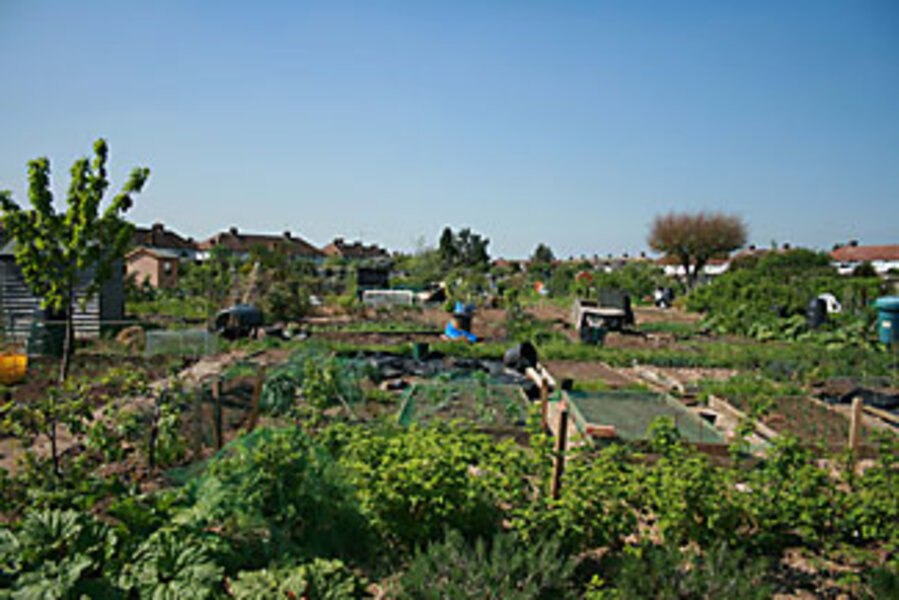New crop of gardeners in plush London suburbs
Loading...
| Kingston, England
Hosing down a row of perky-looking onion tops, Catherine Chu confesses she came late to gardening.
"I never even picked up a spade," she chuckles. "Now I'm completely obsessed."
But it's more than a hobby: Ms. Chu goes through the whole summer without having to buy vegetables from stores. Her allotment – a 50-by-20 foot public plot rented from the council – feeds her, her husband, and their daughter. She smiles at the thought: subsistence farming on the edge of Europe's biggest city.
Such green-fingered industry is becoming more and more common in Britain, where concerns over food prices and provenance is driving the "grow-your-own" (GYO) culture.
Seed suppliers say sales of vegetable seeds have shot up this year. Rowena Hall, of the seed company Thompson and Morgan, says vegetable seeds now outsell flower seeds. Potato seed sales alone are up 10 percent this year.
While many people will grow in their own garden, hundreds of thousands who don't have the space at home will pay a nominal fee for a public plot, known as an allotment. If they can get one, that is.
"There is a very long waiting list," says Bryn Pugh of the National Society of Allotment and Leisure Gardeners. "The interest has mushroomed over the last two years. It's the young professionals who are taking allotments now. They appreciate the fresh food and exercise and can feed families on food that is as free from chemicals as it's possible to be."
On the 72-plot triangle of land wedged in between residential houses in Kingston, southeast England, Chu says the spike in interest in palpable. "When I first came here four years ago, the place was almost derelict. Now there's a waiting list of 30 for plots."
It doesn't take much for gardeners to become evangelistic about their hobby. First, there is the current global food crisis, and price increases that are palpable even in a wealthy country like Britain. Then there are simmering concerns about the callous way big retailers squeeze their suppliers.
Added to that is the surge in interest in organics and local produce – and a sense of unease at the madness of flying produce halfway round the world simply for rich palates to enjoy.
Last week, Britain's foremost chef Gordon Ramsay launched into a tirade against rivals who use produce out of season, and even called for laws and fines on restaurants that serve asparagus in January or strawberries in March.
"I want to see it home grown," he said. "The quicker we get that legislation pushed through parliament then the more unique this country will become in terms of its sourcing, its levels of inspiration, and really understanding those seasonal aspects, which makes it 10 times more exciting for punters."
That may sound like overstatement. But ask any GYO enthusiast and they will tell you he has a point: the food they grow in season has a very different quality compared with the sterile supermarket fare.
"Everything tastes different, particularly potatoes. They are tastier and there's so much more variety," enthuses Vincent Brannelly, who has tended his plot for 17 years. He relishes eating warm, earthy-smelling tomatoes fresh off the plant instead of refrigerated store-bought ones.
It's the same with the peas. His are not hard, frozen pellets of green to be pushed around on a plate. No. "I get them straight out of the pod and eat them. They are beautiful."
So bountiful is his plot that he's always giving vegetables away – to his daughter, his neighbors, anyone really.
"I've got onions galore," he gestures amiably. As if to prove that money really does grow on trees, he points out the purple sprouting broccoli – worth more than $1,100 by his estimate. "[Supermarket chain] Sainsbury sells it for £1 [$1.94] a bunch. I can grow 50 bunches on one plant and I've got 12 plants."






